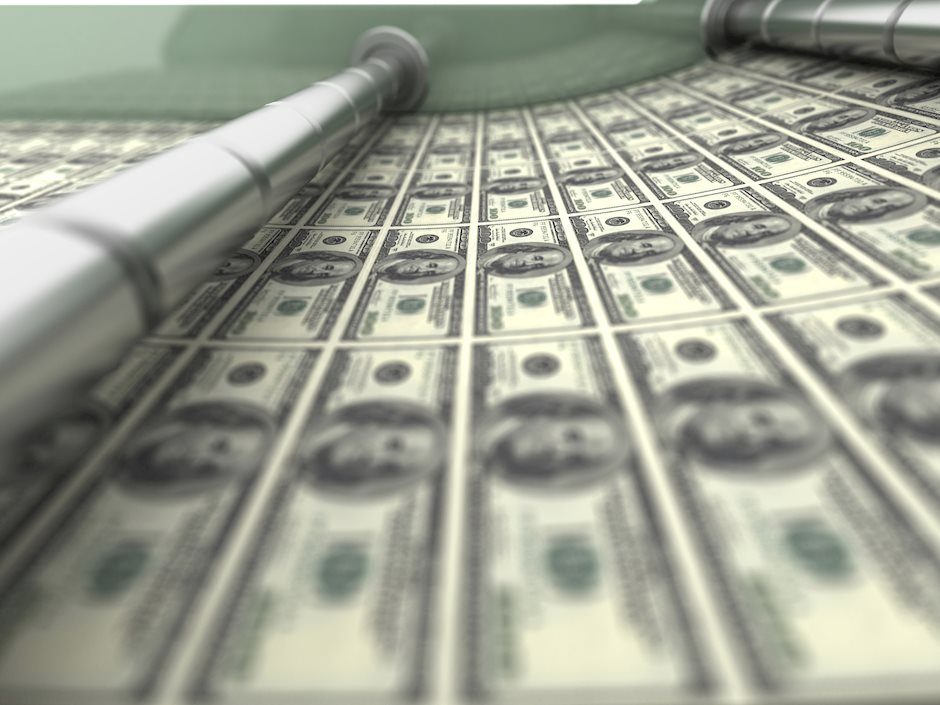It Is Getting Costly to Sell Dollars

It is becoming very expensive to be short U.S. dollars. For the first time since January 2014, ten-year Treasury yields rose above 3%. This move triggered widespread short covering in USD/JPY and drove the pair to its strongest level in 2 months. The U.S. dollar also traded higher against the Swiss Franc and the New Zealand dollar but the lack of gains versus other currencies like euro, sterling the Australian and Canadian dollars tells us that some investors are still wary of going long dollars. There's a difference between short covering and buying so while all of today's U.S. economic reports beat expectations with confidence rising in the month of April and new home sales increasing in March, there's concern that the rise in yields poses a threat to the recovery in stocks and the economy. With that in mind, the rise in yields is driven by the rise in inflation and rate hike expectations. At the beginning of this month, investors saw only a 79% chance of a hike in June but those odds sit at 93% today. The modest sell-off in stocks in response to the rise in yields reflects an optimistic outlook that has translated into demand for risk assets. The yen crosses look particularly attractive and could see further gains in the days ahead.
Meanwhile the euro completely shrugged off this morning's weaker German IFO report and the rise in Treasury yields because German bund yields rose sharply in the first part of the NY trading session. However by the London close, German rates receded, putting EUR/USD's rally at risk. With manufacturing and service sector activity slowing, it was no surprise to see German business confidence fall in the month of April. The declines were significant with the business climate index slipping to its weakest level in nearly 8 years and the expectations component falling to its lowest level since October 2014. This will make it difficult for the European Central Bank to be optimistic when they meet on Thursday. EUR/USD found support today at 1.22 but if U.S. yields continue to rise and Mario Draghi emphasizes the need for caution, the next stop for EUR/USD could be 1.20.
After falling for 5 consecutive trading days, sterling finally rebounded against the U.S. dollar on the back of stronger fiscal finances. For the first time since 2000, the government reported a fiscal surplus. While this report drove GBP higher against all of the major currencies, it doesn't offset the weaker economic reports and dovish comments from the Bank of England last week. According to a separate report from the Confederation of Business Industry, business optimism turned negative in the month of April, a trend that is probably a better reflection of the general performance of the U.K. economy.
The worst performing currency today was the New Zealand dollar, which continued to come under heavy selling. NZD/USD has fallen 7 out of the past 8 trading days with the latest decline taking the pair to its weakest level since January 4th. There were no New Zealand economic reports released but the rapidly shrinking 10 year New Zealand - U.S. yield spread along with the trigger of stops below .7150 prompted speculators to unwind their long positions. Unlike the U.S., recent data from New Zealand has been weak, and investors believe the central bank will keep rates on hold throughout 2018. New Zealand inflation dropped to the bottom of the RBNZ's target last week, which will be a key concern when they meet next month. The Canadian dollar on the other hand rebounded against the greenback following reports from Mexico's Kalach that a NAFTA deal could be reached in the next 10 days. However shortly after these comments were made, Mexico's economy Minister and NAFTA Chief said there are no guarantees that a deal can be reached as President Trump looks to tie Mexican immigration control to the NAFTA deal. The Australian dollar also remained under pressure following a mixed inflation report. Although CPI growth slowed more than expected to 0.4% in the first quarter, the year over year rate held steady at 1.9% and the trimmed mean rate accelerated. This suggests that there are small signs of rising price pressures even though the rate is below the Reserve Bank's target band.
Author

Kathy Lien
BKTraders and Prop Traders Edge

















